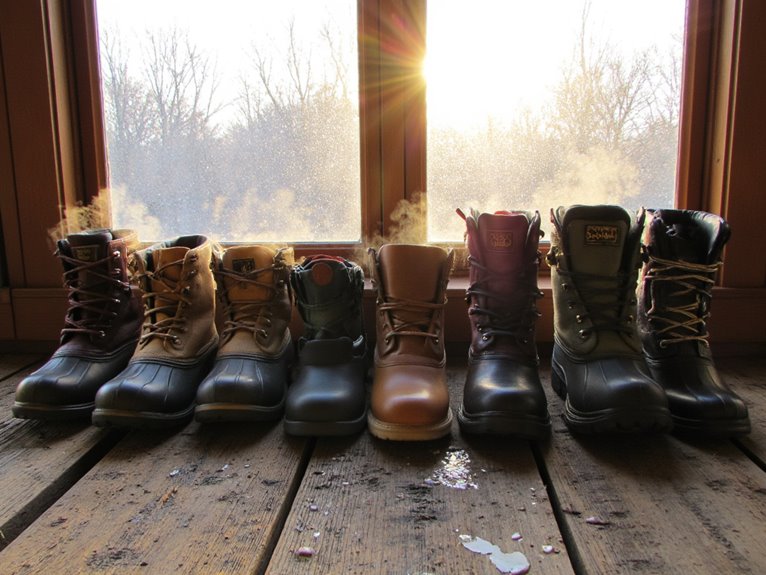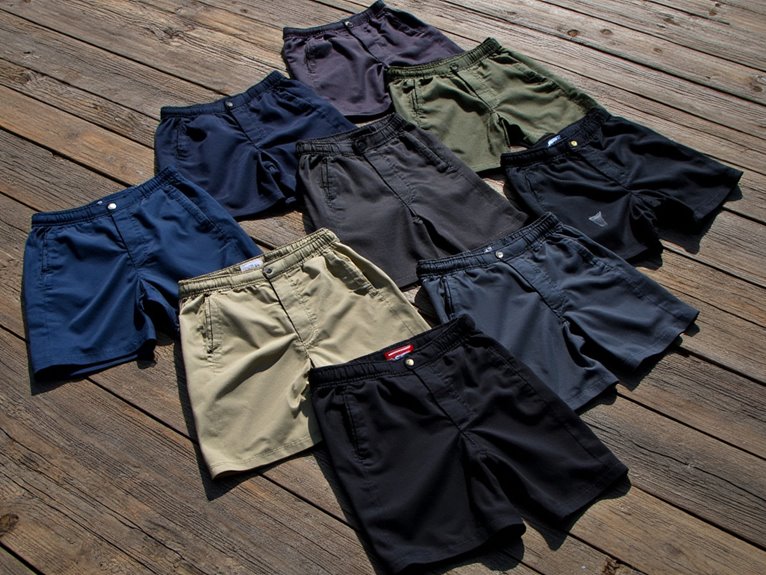Are All Avalanche Airbags the Same?
Avalanche airbags from different manufacturers exhibit distinct design and deployment differences, inflation system variations, and material choices that can substantially impact their performance and effectiveness in real-world scenarios. The number and shape of airbags, material durability, and inflation systems all play a critical role in determining an airbag's reliability and buoyancy. Additionally, sensor and trigger types, user interface, and certifications also vary between models. With so many factors in play, it's essential to weigh, examine, and evaluate the intricacies of each airbag system to make an informed decision. Exploring these differences can lead to a deeper understanding of what makes an airbag truly effective.
We are supported by our audience. When you purchase through links on our site, we may earn an affiliate commission, at no extra cost for you. Learn more. Last update on 1st January 2026 / Images from Amazon Product Advertising API.
Design and Deployment Differences
Avalanche airbags from different manufacturers exhibit distinct design and deployment differences, which can substantially impact their performance and effectiveness in real-world scenarios.
For instance, some airbags deploy horizontally, while others deploy vertically, affecting their ability to keep the user's head and neck above the snow surface.
Additionally, the number and shape of the airbags can influence their buoyancy and stability.
The material used for the airbag's outer shell also varies, with some being more durable and resistant to punctures than others.
These design differences can profoundly impact the airbag's ability to protect the user in an avalanche.
Understanding these differences is vital for users to make informed decisions when selecting an avalanche airbag.
Inflation System Variations
The type of inflation system used in an avalanche airbag can substantially impact its performance, with different manufacturers employing varying methods to rapidly fill the airbag with air in emergency situations.
Some airbags utilize a compressed gas system, where a stored gas is released to inflate the bag, while others employ a fan-based system, which uses a battery-powered fan to inflate the bag.
Additionally, some models feature a hybrid system, combining elements of both.
The choice of inflation system affects factors such as deployment speed, reliability, and weight, making it a critical consideration for backcountry enthusiasts.
Understanding these variations is essential for selecting the right airbag for your needs.
Materials and Durability Factors
Every avalanche airbag's ability to withstand harsh backcountry conditions and sustain potential impacts is largely dependent on the quality and durability of its materials.
The fabric, stitching, and overall construction of the bag play a critical role in ensuring its reliability in emergency situations.
Look for airbags made with durable, water-resistant materials that can withstand extreme temperatures and rough handling. Reinforced seams, stress points, and robust zippers are also essential features to take into account.
Additionally, the durability of the airbag's inflation system, including the cylinder and hose, is vital.
A well-built airbag is essential for reliable performance when it matters most. By prioritizing durability, manufacturers can create airbags that provide a higher level of safety and reliability in the backcountry.
Sensor and Trigger Types
Deploying an avalanche airbag requires a split-second trigger response, making the sensor and trigger types crucial and essential components in the overall system.
The sensor type determines how the airbag is triggered, with options including mechanical, electronic, and hybrid sensors.
Mechanical sensors rely on physical triggers, such as a cord or pin, to deploy the airbag.
Electronic sensors, on the other hand, use accelerometers and gyroscopes to detect changes in motion and orientation, triggering deployment when a certain threshold is met.
Hybrid sensors combine both mechanical and electronic elements, offering a balance between reliability and precision.
The choice of sensor and trigger type depends on the user's needs, with each option offering unique advantages and disadvantages.
Airbag Volume and Shape
In the context of avalanche airbags, the volume and shape of the airbag are vital components that can profoundly impact their effectiveness in a real-world avalanche scenario.
The ideal airbag design must balance volume and pressure to provide sufficient buoyancy and protection, while also considering the shape and deployment characteristics that facilitate reliable inflation and stability.
The size and weight of the airbag system are also vital factors, as they directly influence the overall usability and wearability of the avalanche airbag.
Volume and Pressure
Ideal airbag volume and shape are critical factors in ensuring effective avalanche protection, as they directly impact the airbag's ability to keep the wearer's head and neck above the snow surface.
The volume of the airbag determines the buoyancy it provides, which affects its ability to keep the wearer's head above the snow.
A higher volume airbag provides more buoyancy, increasing the chances of keeping the wearer's head above the snow. However, larger airbags can be bulkier and heavier, affecting the wearer's mobility.
The ideal volume and pressure of an airbag depend on various factors, including the wearer's size, the type of terrain, and the severity of the avalanche.
Shape and Deployment
The shape and deployment of an avalanche airbag are critical components in ensuring the wearer's safety, as they directly influence the airbag's ability to maintain its volume and provide effective protection in various avalanche scenarios.
The airbag's shape can affect its ability to stay inflated and maintain its volume, which is vital for keeping the wearer's head and neck above the snow.
A well-designed airbag should deploy quickly and maintain its shape, even in extreme avalanche conditions.
The deployment mechanism should be reliable and consistent, ensuring the airbag inflates correctly every time.
A poorly designed airbag can compromise the wearer's safety, making it essential to choose an airbag with a well-engineered shape and deployment system, which is essential for preventing fatalities.
Size and Weight
Avalanche airbags come in various sizes and weights, which are critical factors in determining their effectiveness in real-world avalanche scenarios, as a balance must be struck between airbag volume and wearer mobility.
When choosing an airbag, it's essential to bear in mind the following factors:
- Volume: A larger airbag provides more buoyancy, but may impede mobility and increase weight.
- Shape: A more aerodynamic shape can help reduce wind resistance and improve wearer mobility.
- Material: Lightweight yet durable materials can minimize weight while maintaining airbag integrity.
When selecting an airbag, it's crucial to take into account the following factors:
Weight and Packability Concerns
One of the primary concerns for backcountry enthusiasts is the added bulk and heft of an avalanche airbag system, which can weigh anywhere from 3-7 pounds depending on the specific model and features.
This added weight can be a significant factor for those who prioritize lightweight gear and efficient packing.
In addition, the size and shape of the airbag system can also impact packability, making it difficult to fit other essential gear in a backpack.
Additionally, many users must carefully consider the trade-offs between safety and convenience when selecting an avalanche airbag system.
Manufacturers have responded by designing more compact and lightweight systems, but these often come at a higher cost.
Ultimately, backcountry enthusiasts must weigh the importance of safety against the inconvenience of added bulk and weight.
Electronic Vs Mechanical Systems
Reliability and efficiency are paramount considerations when choosing between electronic and mechanical avalanche airbag systems, each with its unique advantages and limitations.
The primary difference lies in their deployment mechanisms. Electronic systems utilize batteries to power a pyrotechnic trigger, while mechanical systems rely on a spring-loaded or compressed gas-powered deployment.
Some key differences between the two include:
Electronic systems often offer more consistent deployment and are less prone to accidental discharge, but require battery maintenance and can be affected by cold temperatures.
Mechanical systems are generally more reliable in extreme cold and require less maintenance, but may have a higher risk of accidental deployment.
Electronic systems typically offer more features, such as multiple deployments and system diagnostics, but may be heavier and more expensive.
User Interface and Ease
When it comes to avalanche airbags, a user-friendly interface is crucial in high-pressure situations.
A device that is simple to operate allows the user to focus on survival rather than fumbling with complex mechanisms.
An intuitive design ensures that the airbag can be activated quickly and easily, even in the most stressful of situations.
Activation Ease Matters
Effective avalanche airbag activation hinges on an intuitive user interface that allows users to deploy the system quickly and effortlessly in high-stress situations.
A well-designed system should minimize the likelihood of user error, ensuring that the airbag deploys correctly in emergency situations.
Some key considerations for activation ease include:
Simple and accessible deployment handles that can be easily grasped and pulled with gloves on.
Clear and concise instructions and visual cues to guide the user through the deployment process.
A minimal number of steps required to deploy the airbag, reducing the potential for mistakes.
Simple to Operate
A well-designed user interface is crucial to guarantee that the avalanche airbag system is simple to operate, even in high-stress situations.
A user-friendly interface enables the wearer to focus on the situation at hand, rather than struggling with the device. Intuitive designs, clear labeling, and minimal complexity are essential to facilitate that the airbag can be deployed quickly and correctly.
Manufacturers should prioritize ease of use, considering factors such as ergonomic design, clear instructions, and minimalistic controls. This guarantees that the airbag can be operated instinctively, even in high-pressure situations.
Safety Features and Certifications
Every avalanche airbag model is equipped with a range of safety features and certifications that guarantee the device meets rigorous standards for reliability and performance. These features are vital in verifying the airbag deploys correctly in emergency situations.
Some of the key safety features and certifications to look for include:
- CE certification, which guarantees compliance with European Union health, safety, and environmental protection standards.
- UL certification, which confirms the airbag meets rigorous safety standards in the United States.
- ISO certification, which verifies the airbag's quality management system and ability to meet customer and regulatory requirements.




